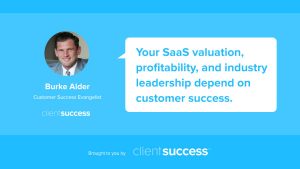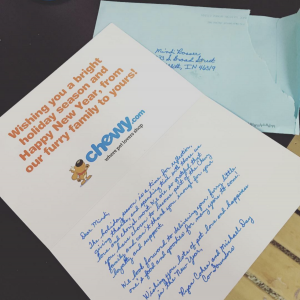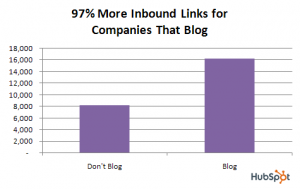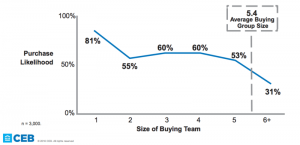
Just do a quick Google search and you’ll find thousands of articles, tutorials and guides on how to obtain the first visits to your online store, including the creation and administration of campaigns using Google Adwords, Facebook, LinkedIn and many other channels. You will also find information on how to organically optimize your business for top ranking search placement on different search engines.
All of this information is really just the first step in a long process to brand discoverability, site search engine optimization and overall revenue. None of it happens over night.
I’ve been here before, though, and have learned first hand over the last eight years what it takes to build a sales funnel and start driving buyers down it. These are the items I’ve invested in that worked best to help my company grow and eventually consolidate our initiatives to only those producing the highest ROI.
Here’s to hoping they do the same for you.
1) Don’t assume anyone knows your business yet.

Regardless of your passion for your business and the fact that it can solve a big problem for thousands of people, those people have no idea it exists. They don’t know you. They don’t trust you. And, they don’t realize how you might be able to help them.
Even if you invest all of your savings in ads and hundreds of people visit your online platform, on average seven out of every ten visitors will never use your service or convert. Worse, this number could be even higher. Those numbers cited by the Baymard Institute were based on the conversion rates for big, well-known companies like IBM. Trust plays an important role in conversion, and smaller brands just don’t have as much of it as established ones do.
What to do about it
For this reason, your sales pipeline needs to begin first by developing an excellent landing page which you consistently A/B test to optimize for conversion and results.
Use video
I suggest you implement a video of around 50 seconds in length that explains in simple words 1) the problem you seek to solve for the customer and 2) the solution you are offering.
A great example to bookmark is this video by Beepi, in which, with very simple graphics, they explain a new process for buying and selling cars:
Ask for reviews
Don’t forget to ask for some testimonials from your first clients. You can automate emails to help make this process easier, or manually reach out to customers individually.
These reviews should be added to your landing page to help build trust with new visitors. Studies have found that 67% of potential customers are influenced by comments about your product online. Use this page and your customer reviews to establish market credibility.
Grow, Educate, Offer
By now, you’ve likely noticed that this landing page serves multiple purposes, including building product awareness and brand trust. Conversion is the third goal –– but there are various conversion types.
As evidenced by the Baymard Institute study mentioned earlier, most visitors to your site will leave without purchasing. That’s OK for right now. Depending on the function of your product, seek to obtain a viable conversion alternative. The most commonly used conversion point after a sale is collecting an email address and building your email list. This is a top of funnel initiative.
Now that you have someone interested enough to give you an email, you’ll want to begin pushing them down the funnel, continuing to build awareness, trust and ultimately persuading them to purchase.
The goal is to begin your sales process in order to educate the client.
How It’s Done

One successful brand example of this initiative is Booking.com, where in order to generate a lead and store the email of their users, even those that are not necessarily ready to reserve a hotel yet, the company offers to send out “secret” alerts with special sales and offers. This allows their email team to be in constant communication with new users, priming them to make a purchase when they are ready or as a deal strikes.
2) Educate now in order to sell later.

Once you have an email, now is the time to push your interested visitor further down the funnel. A big mistake companies make at this phase is attempting a hard sale. Do not do this. Instead, create value for your potential customers.
If, for example, your product is a solution for small and medium-sized business so that they can afford ergonomic chairs for employees, then an excellent idea would be to educate those potential customers with a sequence of weekly emails about data-proven productivity increases from the implementation of such chairs, or the money saved in insurance fees from a reduction in chiropractic needs.
The tool that I use for this is Convertkit, which allows you to entirely automate this process for each new user that is added to your database.
Leading Not Pushing
The goal of this sales process, where you first educate and then add value for the potential customer, is to lead them step-by-step along the way until they obtain the necessary information they need in order to feel comfortable making a final purchase decision.
Not all of the visitors to your website will be equipped with the same base education level for your product, nor will they be aware of all of the advantages that can be obtained from it. As shown in a study done by MOZ, the average user begins using your services or product on visit number eight. Yes, you read correctly, not until the eighth visit. This is why it is so important that you carry out the follow-up correctly, build trust and recognition all the way until the sale is made.
3) Never underestimate the potential impact of a personal meeting.

If you are small enough or have enough time, get out there and get in front of your customers. Launch pop-up shops, send handwritten notes, schedule a personal meeting or product recommendation session. This helped us enormously when it came to being able to grow our start-up for 2 reasons:
- It gives you the possibility to become more familiar with your users, their needs, their worries, their insecurities and the objections which inhibit them from buying your product.
- It will allow you to plan and automate exactly the emails you will need to send in the future in order to provide follow-up and educate your next clients all the way up until the sale is made.
This third step takes a lot of time, dedication and energy, but without a doubt it is the most important one in this article. If you get to know your customers better than your competition knows them, you will win.
4) Design your onboarding process from day one.

An error I see too often is the lack of an onboarding process. A proper onboarding process allows new customers the opportunity to take the first steps to actually using the product with success.
Today, in my opinion, the company doing this the best is Canva. Use their software if only as a way to see how you can take a user, who has never used nor understands how your platform works, to be an expert user in just 23 seconds.
For retailers, especially if you have a product that is use-oriented (i.e. autoparts, sports equipment, etc.), mimic this use education process. Redshift Sports is a bike part retailer making unique items in the market. This requires a bit of education not only before the purchase, but after –– as riders will need to know exactly how to change out their parts. To account for this, the team has created multiple how-to videos and embed them in email campaigns out to those who have purchased.
In all, always put yourself in the shoes of your customers first. What are they experiencing as they first use your products? What are their emotions? How might you be able to help and make the experience better overall? Help them get to the completed task (i.e. using and loving your product) as quickly and painlessly as possible.
5) Remarketing: use it intelligently.

You’ve already seen this. It happens to you every day. A company’s logo or advertisement will begin to pop up everywhere you go: Facebook, your favorite news site, etc. You’ve been to that company’s site before, but you didn’t take an action, and now it seems they are stalking you across the web.
You can thank remarketing for this.
For your own business, I invite you to take a better approach. Instead of bothering a potential customer once more, use this mechanism instead in order to continue strengthening the ties of the relationship you’re building with them.
One example of this that I like very much is UXPin, which uses remarketing through Facebook ads to continue educating their potential customers and already existing fans. They’ll use ebooks, tutorials, guides, videos and more to push customers back to their site to engage with the multimedia content.
In the long term, when the client finally needs your services, your brand will be the first they think of. After all, yours will be the one which helped expose them to the market, educate them on the use and provide value to them across the web.
Digital & Social Articles on Business 2 Community(121)







